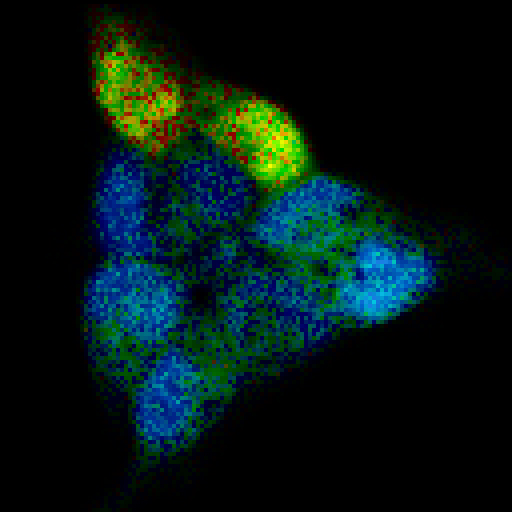Imaging dynamic processes in tissues or cells require methods that are fast, reliable, and quantitative. Scientists and engineers at PicoQuant have developed rapidFLIMHiRes which enables imaging samples at up to 15 frames per second with a time resolution of 10 ps using Fluorescence Lifetime Imaging (FLIM).
 With rapidFLIMHiRes the rise of calcium ion concentration in the cells shown in the picture can be quantitatively observed over a short time period.
With rapidFLIMHiRes the rise of calcium ion concentration in the cells shown in the picture can be quantitatively observed over a short time period.
With rapidFLIMHiRes users gain access to both rapid data acquisition and high time resolution when studying fast processes such as protein interactions, FRET dynamics, ion fluxes, or even quickly moving species.
The rapidFLIMHiRes approach exploits a series of hardware capabilities recently introduced by PicoQuant to overcome the limitations of classic, Time-Correlated Single Photon Counting (TCSPC) based FLIM: namely hybrid photomultiplier detectors capable of handling count rates of about 78 Mcps, the MultiHarp 150 4P TCSPC module with 4 parallel detection channels, a dead time of 650 ps and time bin widths as small as 10 ps. Furthermore, the SymPhoTime data acquisition and analysis software has been updated with memory management and processing time improvements as well as correction algorithms to reduce decay curve distortions due to very high count rates and artifacts of the detector pulse pile-up. The SymPhoTime 64 software stores all raw photon timing information in the portable TTTR file format, so that no data is lost and can always be analyzed with a broad array of commercial and open source tools.
All components required for rapidFLIMHiRes are available either individually, as part of a PicoQuant Laser Scanning Microscopy (LSM) Upgrade Kit for systems from Nikon, Olympus, Scientifica, or Zeiss, and as a special configuration of PicoQuant’s MicroTime 200 confocal time-resolved microscopy platform.